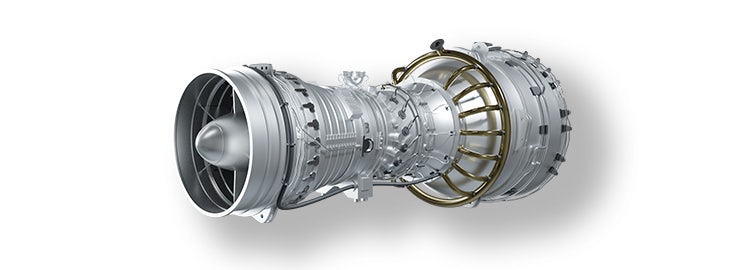It is essential to verify the functioning of every individual component of an overspeed protection system. This can be done during its installation, commissioning / turnarounds or troubleshooting. As this is a critical process and downtime is costly, it is crucial to have a solid step-by-step plan. This checklist provides an overview of the steps that should be taken to verify the safety and reliability of the sensors, installation, system and signal.
Note: this checklist is part of our book Speed, which you can request for free via this page »
Sensor verification
The following checks can be done when the machine has stopped and the sensors are accessible:
1.1 What is the type of sensor being used?
1.2 What is the measuring range of the sensor?
- Action: refer to the sensor’s datasheet for this information.
- Action: compare this information with the settings of the overspeed detection system.
2.1 What is the maximum allowable distance of the used sensor and the pole wheel?
2.2 How is the signal output affected by this distance?
- Action: refer to the sensor’s datasheet for this information.
- Action: measure the gap between the sensor and the pole wheel.
- Tools: feeler gauges or another type of depth measuring tool.
3.1 Does the sensor need to be aligned in a certain direction in relation to the pole wheel?
3.2 What is the maximum side and angular misalignment that is allowed for this sensor?
- Action: refer to the sensor’s datasheet for this information.
- Action: verify the alignment between the sensor and the pole wheel.
4.1 How is the sensor mounted on the machine i.e., through the bearing casing or on a bracket?
4.2 How rigid is this setup?
4.3 Is the setup properly secured to a fixed point of the machine?
- Action: verify the installation of the speed sensors and the stiffness of the bracket.
- Action: verify the tightness of all bolts and nuts of the brackets and sensors.
- Tools: spanners
5.1 What is the shape of the pole wheel?
5.2 What is the module of the pole wheel?
5.3 What is the height of the teeth on the pole wheel?
- Action: verify the dimensions of the pole wheel on the actual machine, or through its drawings.
- Action: compare the pole wheel dimensions to the specifications of the sensor and the overspeed system.
Installation verification
The following checks can be done when the machine is running. However, if there is an increased risk, the machine should be stopped before doing these checks.
1.1 What type of cables are being used to transfer the signals from the machine to the overspeed detection system?
1.2 How is the grounding and shielding of all the sensor cables? Is it connected as described in the user manual of the overspeed detection system?
1.3 Is there a clear grounding philosophy with single ended shielding, to prevent ground loops?
1.4 Verify the clear differences in the installation between PE, IE and IS.
- Action: check the type of cable from the machine, in every junction box, to the overspeed system.
- Action: When the cable not shielded per overspeed measurement, consider replacing this cable.
- Action: measure the resistance, current, and voltage between the shielding and the associated earth connections.
- Tools: multimeter
2.1 How are the wires terminated in the junction boxes?
2.2 Are the terminals properly fastened?
2.3 Are the wire-end ferrules used correctly?
- Action: check every junction box for proper connections.
- Tools: screwdriver
System verification
1.1 How is the device configured?
1.2 Do all of the in- and outputs work as its intended?
1.3 What type of voting structure is used?
- Action: go through the overspeed detection system configuration and look for anomalies and deviations from its standard functionality.
- Action: inject a speed signal (simulation) into the overspeed system, with the same characteristics as the actual signal.
- Action: check if the analog and digital outputs change when certain values are met.
- Action: verify the functionality of the voting structure by going through all of the logical combinations.
- Tools: configuration program of the overspeed detection system, speed simulating equipment, and a multimeter
2.1 How is the overspeed system wired on the terminals?
2.2 Does the system have internal wiring?
- Action: verify all of the wiring on and in the system for proper connections.
- Tools: screwdriver
Signal verification
The following checks to verify the signal can be done when the machine is running:
1.1 What shape does the signal have right before it enters the overspeed detection system?
1.2 Is there noise present on the incoming signal?
1.3 How stable is the sensor power supply?
- Action: measure the shape, noise, and AC and DC levels of the incoming speed signals during a run-up and during nominal speed.
- Action: store this data for future reference.
- Action: when replacing an overspeed detection system, measure the incoming signals on the old system first before replacing the system.
- Tools: oscilloscope
2.1 How do the measured signal levels compare to the trigger level of the overspeed detection system?
- Action: measure the AC and DC levels of the incoming signal and verify this with the configuration.
- Tools: oscilloscope and the configuration program of the overspeed detection system.
3.1 How stable and even is one revolution of the pole wheel?
3.2 Verify the eccentricity of the pole wheel during different speeds.
3.3 Does the pole wheel have enclosed magnetic fields?
- Action: measure the eccentricity close to the pole wheel.
- Action: measure the magnetic stability of the pole wheel with eddy current shaft vibration sensor on the pole wheel.
- Action: measure the magnetic fields in the pole wheel when the machine is stopped and the pole wheel is accessible.
- Tools: eddy current shaft vibration sensors (if already present) and a Gauss meter.

